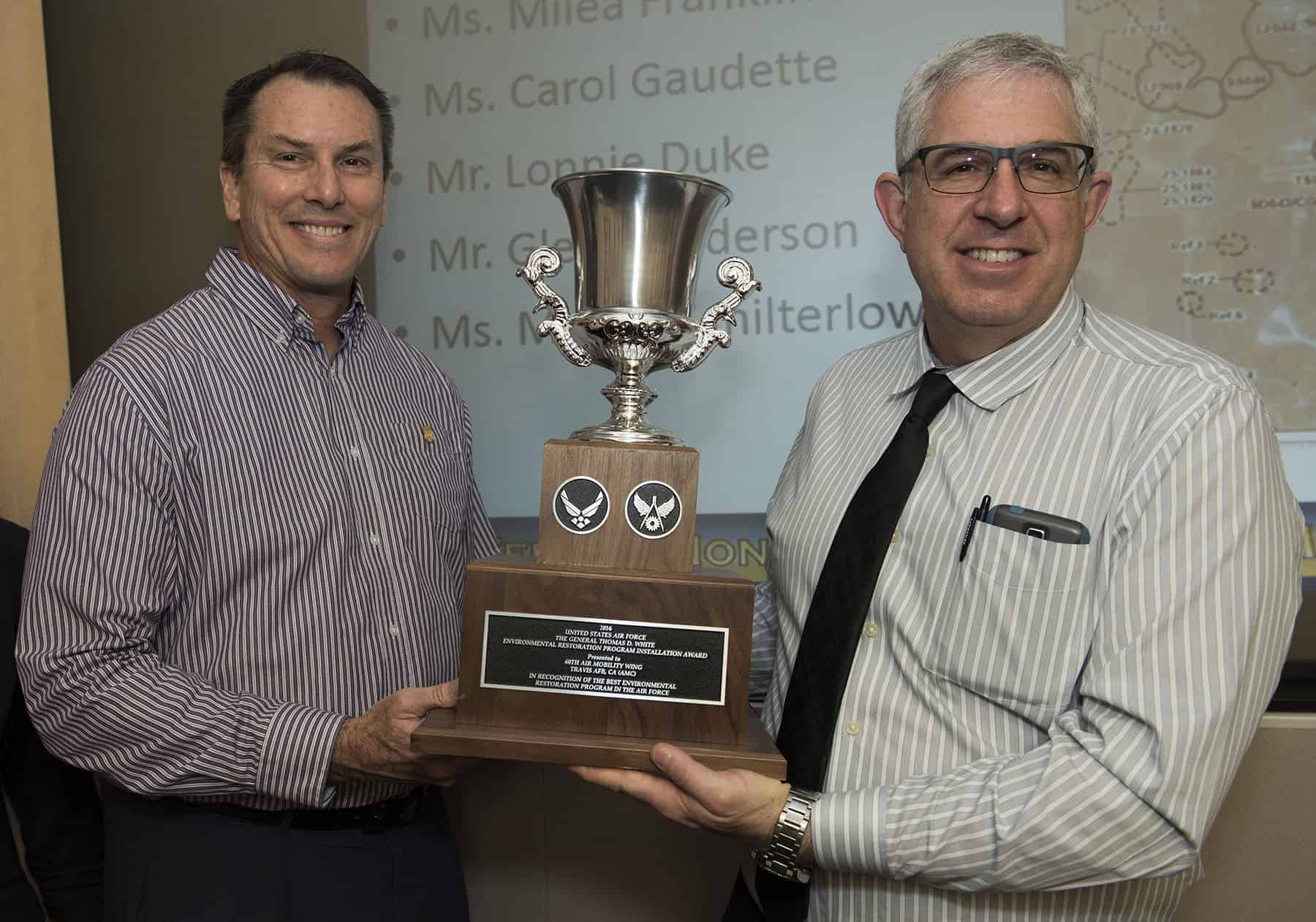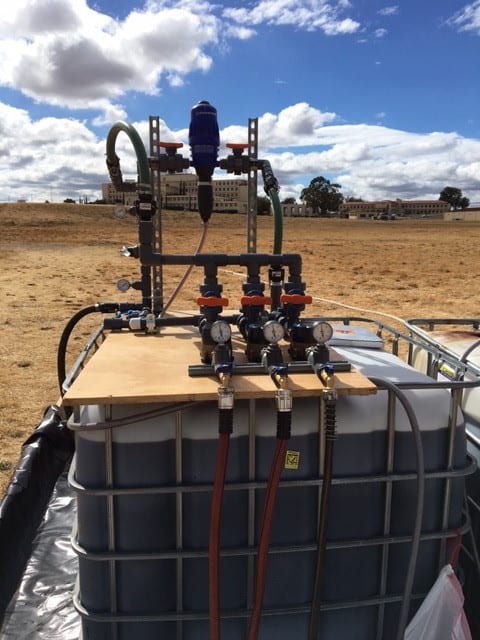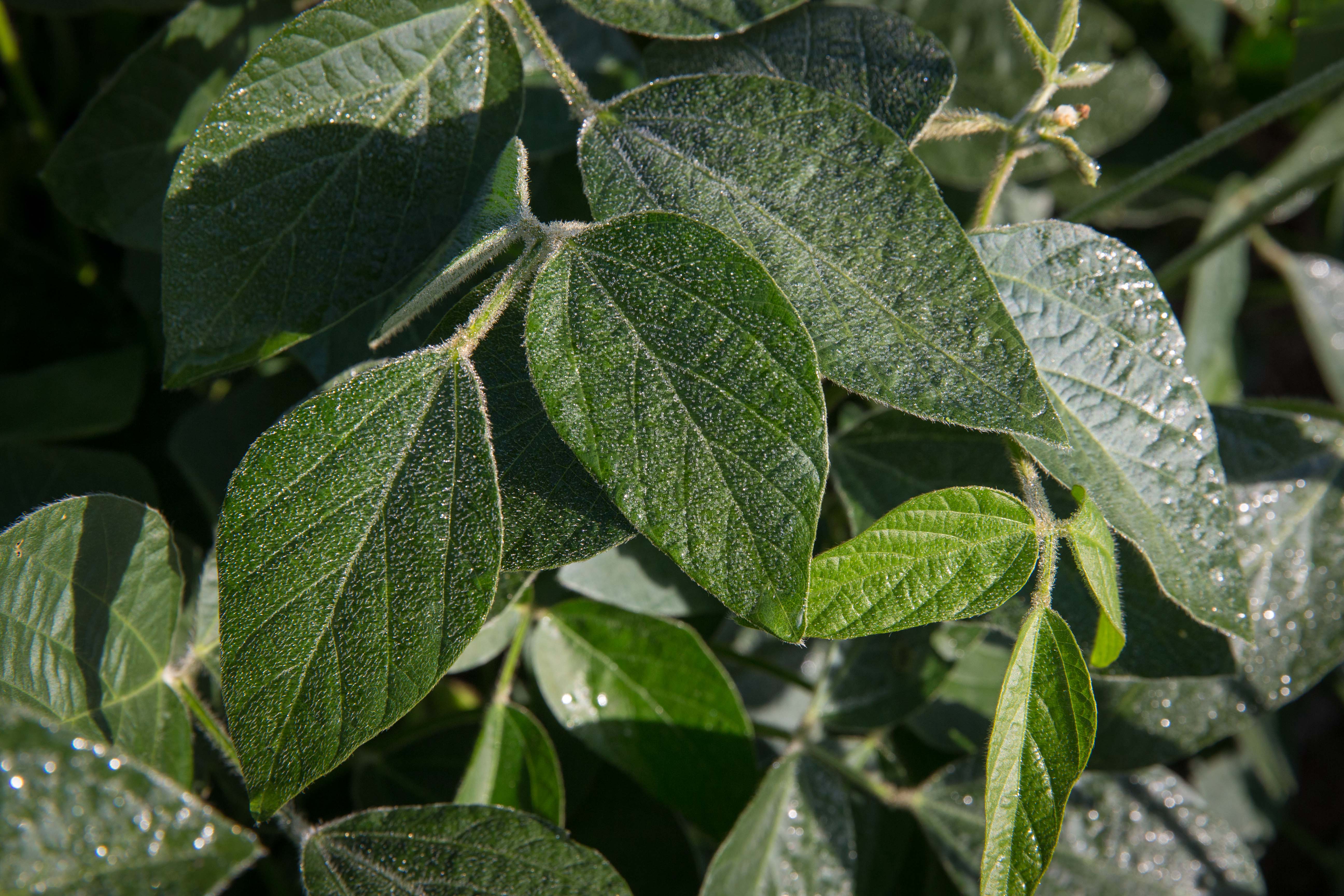When a government agency successfully marries cost savings with environmental protection, people pay attention. That winning combination is exactly what led to Travis Air Force Base winning the 2016 Thomas D. White Environmental Restoration Installation Award and the 2017 Secretary of Defense Environmental Restoration Award for Installations.

Lonnie Duke (right) and Glenn Anderson (left) received the prestigious Air Force Thomas D. White Environmental Restoration Installation Award in 2016 for their work at Travis Air Force Base.
Under the leadership of Lonnie Duke, Restoration Program Manager since 2016, this California Air Force base has aggressively pursued a sustainable Groundwater Treatment Program (GWTP) using soy oil. The results are notable: cost savings of over $250,000 per year and an annual carbon dioxide emissions reduction of approximately 930 tons – the equivalent of taking 200 cars off the road.
“Our team at Travis has always been interested in trying innovative environmental technologies and has often been the first in the country to try new techniques that ultimately benefit the scientific community as a whole,” explained Duke.
Travis launched its first groundwater remediation demonstration project in 2000. They designed it to improve groundwater remediation using a carbon donor source to feed microbes that would break down chlorinated solvents (primarily trichloroethylene, or TCE). They accomplished this by pumping non-emulsified vegetable oil made with soy into injection wells to create a treatment area where microbial activity is able to break down the harmful solvents into ethene, a harmless end product. Despite good intentions, the program was not yielding the desired results as it was difficult to pump the non-emulsified soybean oil into the subsurface. This demonstration ended early because the area was needed for a new construction project to support the Air Force mission. However, it was a good learning opportunity and the beginning of a search for an effective in situ groundwater solution.

Travis Air Force Base’s sustainable Groundwater Treatment Program (GWTP) using soy oil accomplished the dual goal of cost savings and environmental protection.
When Duke joined the team as a Project Manager in 2008, he began tracking and reporting the GWTP’s energy usage and CO2 production. As a result of this reporting, all parties involved agreed to shut down one of the base’s groundwater treatment plants that was creating tons of CO2 annually but only removing ½ lb. of contamination in an entire year. From there, Duke and his team went back to the drawing board.
The Travis team redesigned the process in a way that not only accelerated the pace of remediation, but also reduced costs and cut greenhouse gas production. The team worked to perfect the process through trial and error using several Emulsified Vegetable Oil (EVO) formulations, various tools for injecting the EVO, and different methods of circulating the EVO carbon donor source.
“Green and Sustainable Remediation (GSR) goes hand-in-hand with accelerating cleanup timeframes and reducing costs,” Duke added. “We have been extremely successful in cleaning up high concentrations of chlorinated solvents. Some source areas are seeing a 99 percent rate of cleanup and the cleanup timeframe for multiple sites has been reduced by several decades.”
“The nice thing about this process is no energy from the Travis electrical grid is used. We no longer rely exclusively on energy intensive pumps and treatment methods that produce CO2 emissions. Using EVO made from soy lets mother nature do what she does best.”
The Travis’ GWTP continues, focusing on reinjecting EVO at locations where solvent concentrations aren’t reducing as quickly as other locations.
Other components of Travis’ cost savings include: introducing solar power to existing treatment system components; implementing additional in situ source-area treatments such as a sulfate bioreactor that uses waste drywall as a sulfate donor to treat fuel contamination; applying phytoremediation where appropriate; installing in-situ biobarriers across high concentration plumes; and improving the performance of existing remediation systems.
Travis AFB was the first DoD installation to complete the ASTM Greener Cleanups self-declaration process. More information can be found here. Select Travis AFB from the Installation List and then search for AR# 2466.
The U.S. Air Force-led team that collaborated on this program includes the Air Force Civil Engineer Center, the U.S. Army Corps of Engineers, the performance‐based contractor CH2M Hill (Now Jacobs), the U.S. Environmental Protection Agency, the California Regional Water Quality Control Board, and the California Department of Toxic Substances Control. Tersus Environmental is the manufacturer of the Emulsified Vegetable Oil used at Travis (https://www.tersusenv.com).
For more information on the sustainable groundwater remediation program at Travis, contact Lonnie Duke, lonnie.duke@us.af.mil.

